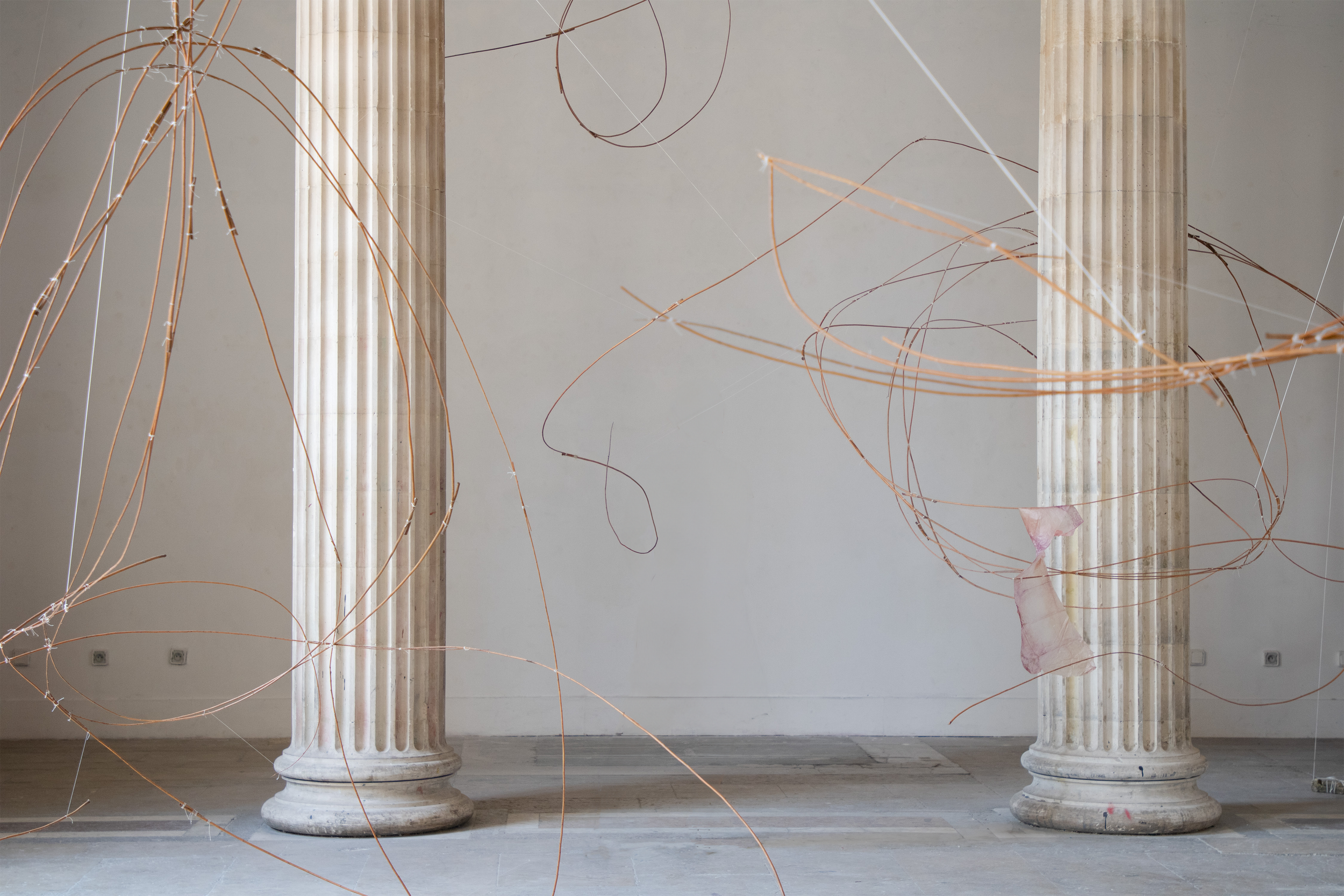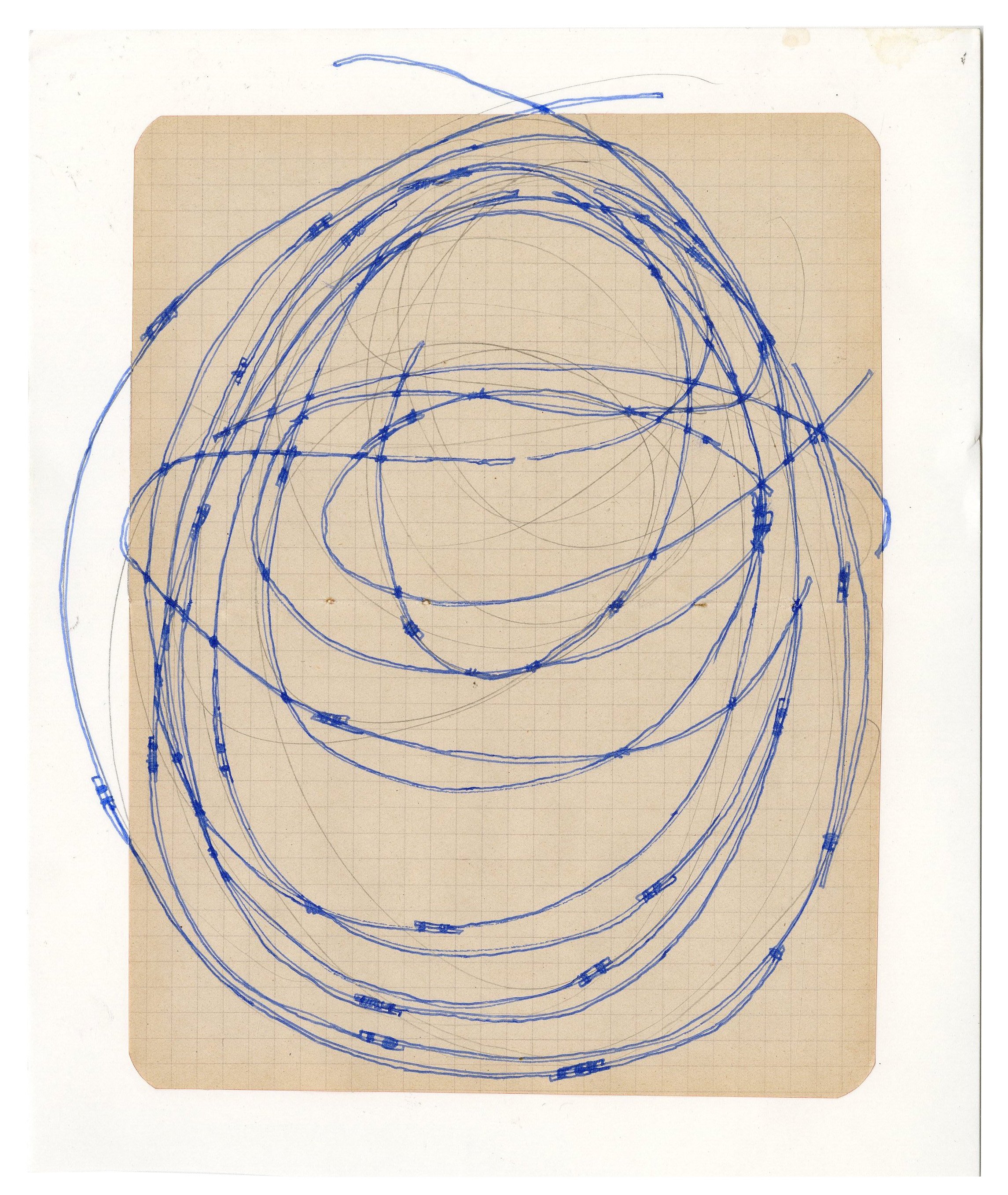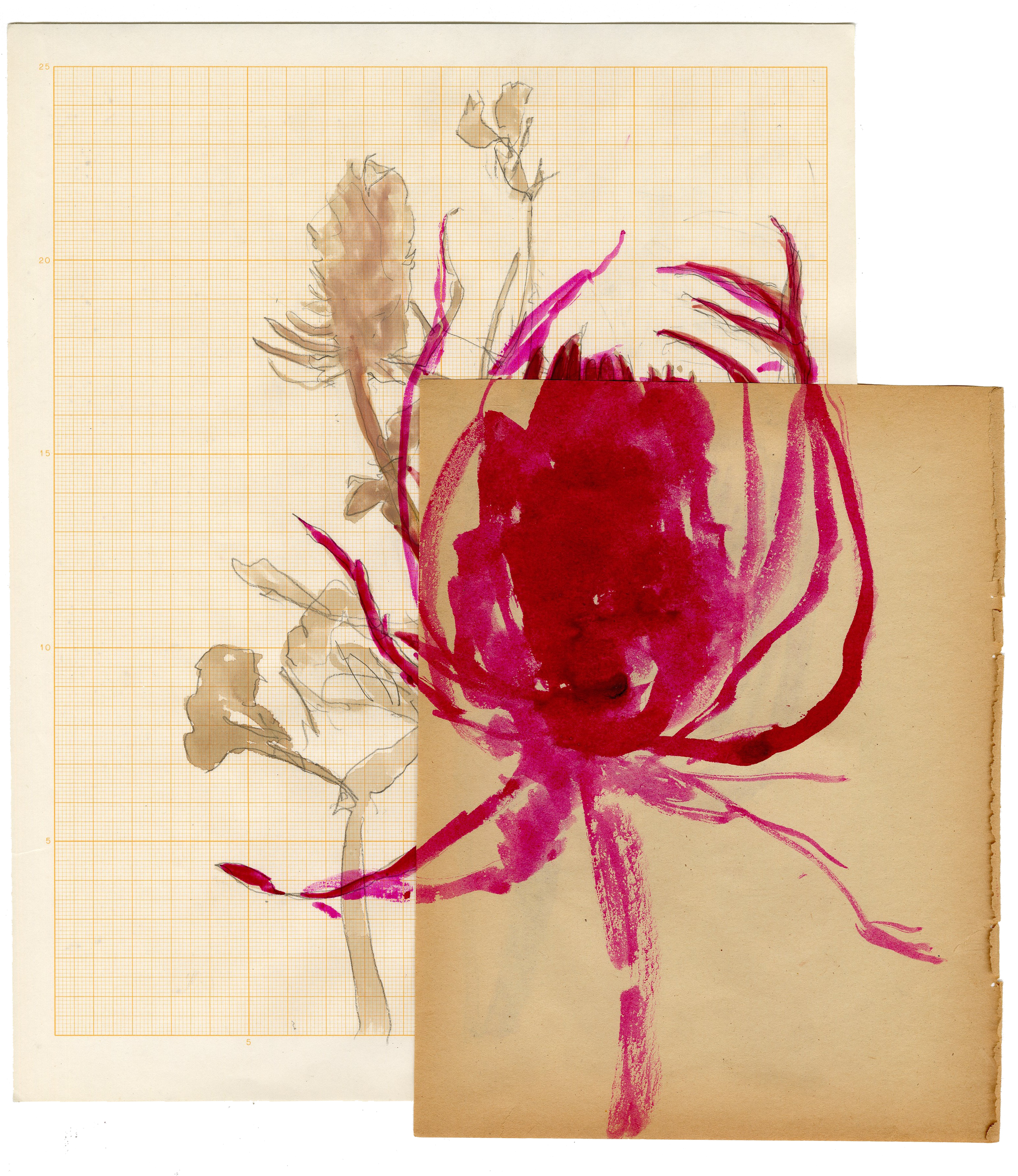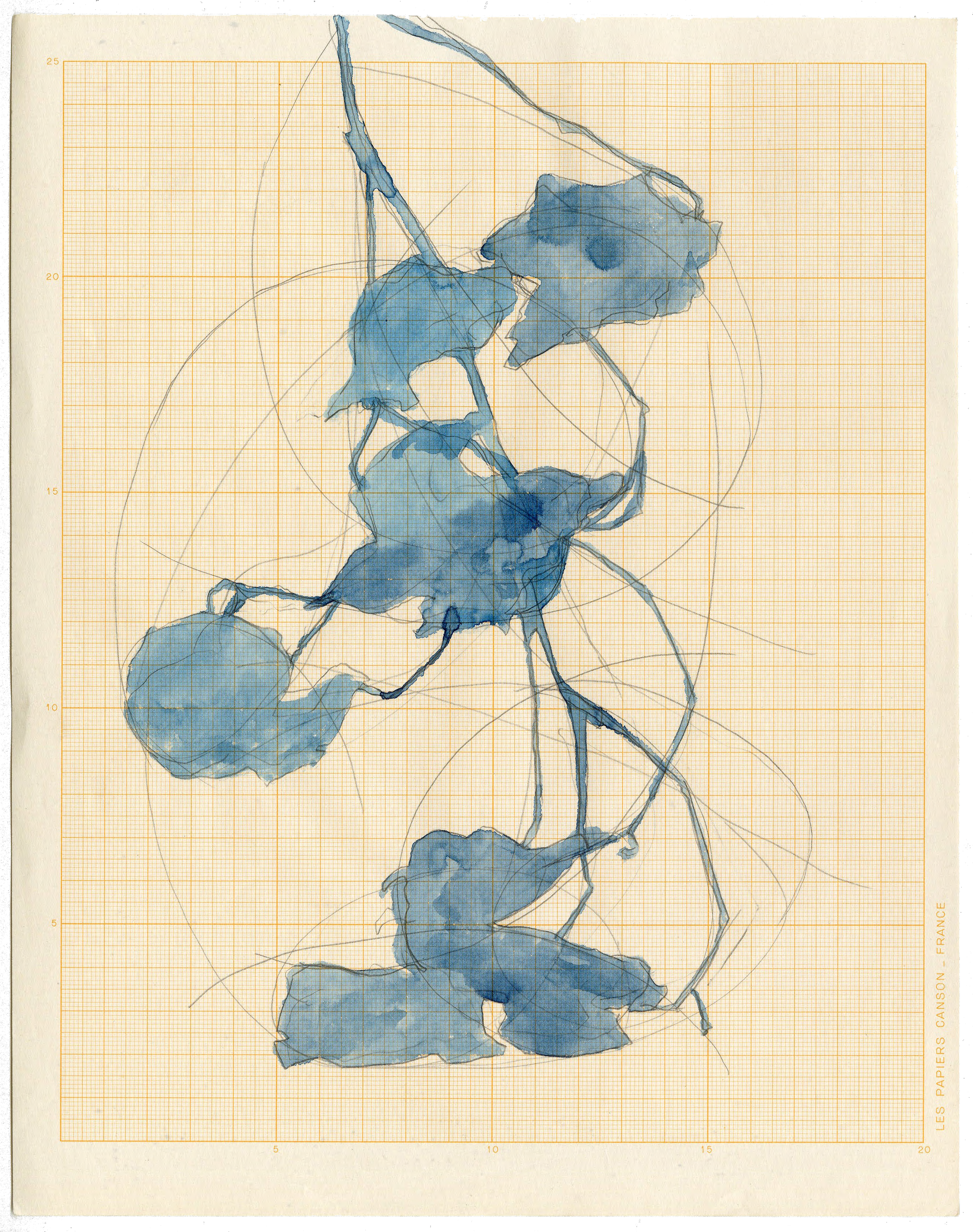







![Growing in Lightness [Gordes]1.13.5.jpg](https://images.squarespace-cdn.com/content/v1/66f3d2459a423a4d6e0f90c8/762e970e-a001-4a3d-8ac5-f6566280cfba/Growing+in+Lightness+%5BGordes%5D1.13.5.jpg)
THE INTERVIEW
Alexandra Willis
1. Could you share a bit about your background and what led you to start your art practice?
I grew up in London. I'm half French, half English, and I did a master's in Chemistry at Oxford before starting at Beaux-Arts. Toward the end of my degree, I decided to shift from science to the arts. Although superficially the subjects seem very distant, they’re not so different. In both of them, you're in a constant, ambiguous but determined investigation into the unknown.
I did chemistry because I found it interesting, but I always knew I wanted to do art. I realized that if I didn't give it a shot now, I might never get the chance. Your practice is something that's so important to nurture that I wanted to give it the time and space it deserved. I've always had some form of artistic practice, but it's rare to have the time and space that it needs to grow and evolve. I hoped moving here [Paris] and coming to this school [Beaux-Arts de Paris] would give me that.
2. What themes does your work explore?
I would say I don't have a themed approach to my practice. It's rather a way of seeing and trying to frame how I see the world. The recurring ideas and motifs naturally emerge and just represent my general interests.
Often, it draws on natural phenomena, or often that's a starting point for some of my projects, which then expand into more abstract ideas. I work in series, so I guess there are threads that run through different projects, but generally, I wouldn't say I have a thematic body of work.
Q: What kind of natural phenomena interests you?
Recently I've been working with equilibriums, for example the balance of forces, especially gravitational, and other dynamics surrounding us that we can't see. I try to bring attention and consciousness to the beauty of invisible workings of the world. These are forces we’re so accustomed to that we stop perceiving them, I try to show how delicate and beautiful these phenomena are and meditate on them a bit.
3. How has your work evolved over the years, and what has influenced these changes?
I think my work has evolved in that way that reflects my own evolution. Moving countries, changing subjects, meeting new people, and changing environments have all had a significant impact. But what impact exactly is often only visible once I have some distance from the work I'm making.
The discovery of a new material also has a large influence on my work, like I started working with willow about a year ago, and I've been a bit obsessed. I think I'm coming to the end of my willow chapter, but it's funny—you have these sort of encounters with things which just inspire and captivate you, so you roll with it while it's with you.
When you're making a piece, you can't help but imbue it with the emotion or the energy that you're feeling at that time. So, my work doesn’t have a linear evolution so much as it becomes a living archive
Q: What do you think that archive has begun to look like while you've been in Paris?
At the beginning it was quite chaotic. I think it's a good reflection of where I was at. I moved through quite a lot of different subject matter but didn’t really give myself enough time to fully process or explore my interests in depth.
But then last year I started making a series of kites and then that's when I also started using willow - it was a complicated period for me and I became quite obsessive. I think kite building really helped me, they’re so fragile and fiddly. It was a perfect occupation for my mind when I was scattered. As someone who is not particularly patient, when I take on these long, intricate projects, it's normally that I need something to anchor me, to occupy my mind. At the time I didn't realize that I was spending days not leaving the studio, just surrounded by bamboo and paper and lost in it.
4. Where do you find inspiration for your work?
Really, from anywhere and anything. I have ideas that are on my mind and I seek them out, sometimes it feels like they begin to manifest around me. Like when you start noticing it everywhere, seeing faces in paving stones and things like that. I try not to limit my sources and I accumulate texts and images and objects until something emerges from the organized chaos.
5. Can you walk us through your creative process and how you bring an idea to life?
Certain ideas stay within your constellation for a while, waiting for the right moment to take shape. Some hang around a while, while others start gathering weight and momentum. I like to work on multiple projects at once because focusing too intensely on a single piece can make me lose perspective on what I’m trying to say.
It’s really about nurturing different points of interest until the thing just needs to exist and I’ve got to get it out of my head. I do a lot of drawing so that even when I don't have the time or space or materials to create the work that I'm thinking of, I have some record of it. Then I go back to those drawings when the timing feels right or when I've had a new thought about what direction I want to take it in.
Especially as a student, it's constantly a game of resourcefulness and happenings where you stumble across the material, and that leads to a project existing. I keep a collection of all my ideas that I hope to realize one day because some of them are slightly too ambitious for my current setup.
Q: You mentioned earlier the willow and your kite obsession, what kind of ideas and materials do you think you're working with right now?
I'm still in my willow era but I'm hoping that my upcoming exchange will bring a rupture. My work is often ephemeral, I find the object permanence of sculpture quite tricky, so I tend to make installations that I then deconstruct back into their raw elements.
I'm still using the same willow that I started with. My installations are just different iterations of the same base material. The kites are also transient in their own way because I dyed the paper organically, making them sensitive to the environment. They change over time, and recently, I went down into the cellar where they’re stored, and all my kites had completely changed in color. It was bittersweet, like your children growing up without you, proud but unfamiliar.
But that’s something I have to accept, so much of my work is about the ephemeral beauty of things, and change is an inevitable part of that. It’s odd sometimes to think that many of my pieces no longer exist and those that do are still in flux.
But who knows, perhaps my cement era is next, but I have my suspicions.
6. What is the project you’re most proud of to date?
I think the project I'm most satisfied with is a site specific willow installation called Growing in Lightness, which I completed last summer. It was probably the most ambitious project I've done so far.
As part of our undergraduate diploma we’re asked to do a solo show, which is the first time that you're really invited to occupy a space. I had had this idea in the back of my mind for a long time, and suddenly I had the energy and group of people around me to make it happen. It was so nice seeing a concept that you've been living with and nurturing finally take form.
The work was ephemeral, it only existed for a day before becoming willow again, which was sad, but also beautiful. It had a cicadaness to its existence, dormant as an idea for the majority of its life and then existing beautifully for just one day before it disappeared again, it was really a magical experience.
In a world that’s in such constant change and turmoil, it feels difficult for things to exist when everything around them is moving so quickly. The fact that the work exists and disappears quickly feels true to what I’m trying to capture right now.
Q: Do you know how many projects you’ve used the willow for so far?
I've currently got a small piece in an exhibition at the moment, which is the same willow in another form, so, including this one, probably nine or ten, but some of them are more ambitious than others. I've been working on the idea of traps recently, exploded and abstract crab trap forms. Sometimes, I keep them as sculptures rather than deconstructing them so the willow is going to slowly whittle down and disappear, but generally I really like recycling the material that the works are made from. IIt feels like the work has a life cycle
7. Do you see yourself staying in Paris long-term, or are there other cities that inspire you to work there?
I really love Paris, especially because, in my current situation, I couldn't ask for better. The fact that the Louvre is just across from us on the river and that I can pop in during a lunch break is crazy.
I'm very grateful to be here now, but I hope to move around. Changing environments challenges the way you see and live, making you question your assumptions and daily routines, which is always beneficial for one’s practice. Having already changed countries, moving feels intrinsic to who I am. I’m about to leave again, and maybe Korea will wear me out and I’ll be happy to settle back in Paris, but I’ve got a feeling this period of traveling might continue for a while.
8. What would you like to accomplish in the next few years?
I don't have a particular goal. The last few years have been a lot of self work trying to foster a good relationship with my practice, because it's so unpredictable. There are times when it feels like I’m dragging it along, and other times when it’s moving so quickly that I can barely keep up.
With time I'm getting to know it better and know myself better, so I hope I stay attentive to it. I think that's what my goal is for the next few years, to stay curious and ask myself questions.
9. If there’s one thing you hope people take away from your work, what would it be?
My work is open to interpretation of course and having a specific intention can feel difficult when people approach the work from such different contexts, understandings, and perceptions of the world. I hope that my work creates a space where people can just be with it, stepping outside their daily lives for a moment of observation and curiosity. That’s something I value in art and its role in my life. Art exists as a space for pause, openness, and not necessarily understanding.
Sometimes we get so used to needing answers all the time and I’m not sure that’s always what’s best for us.

